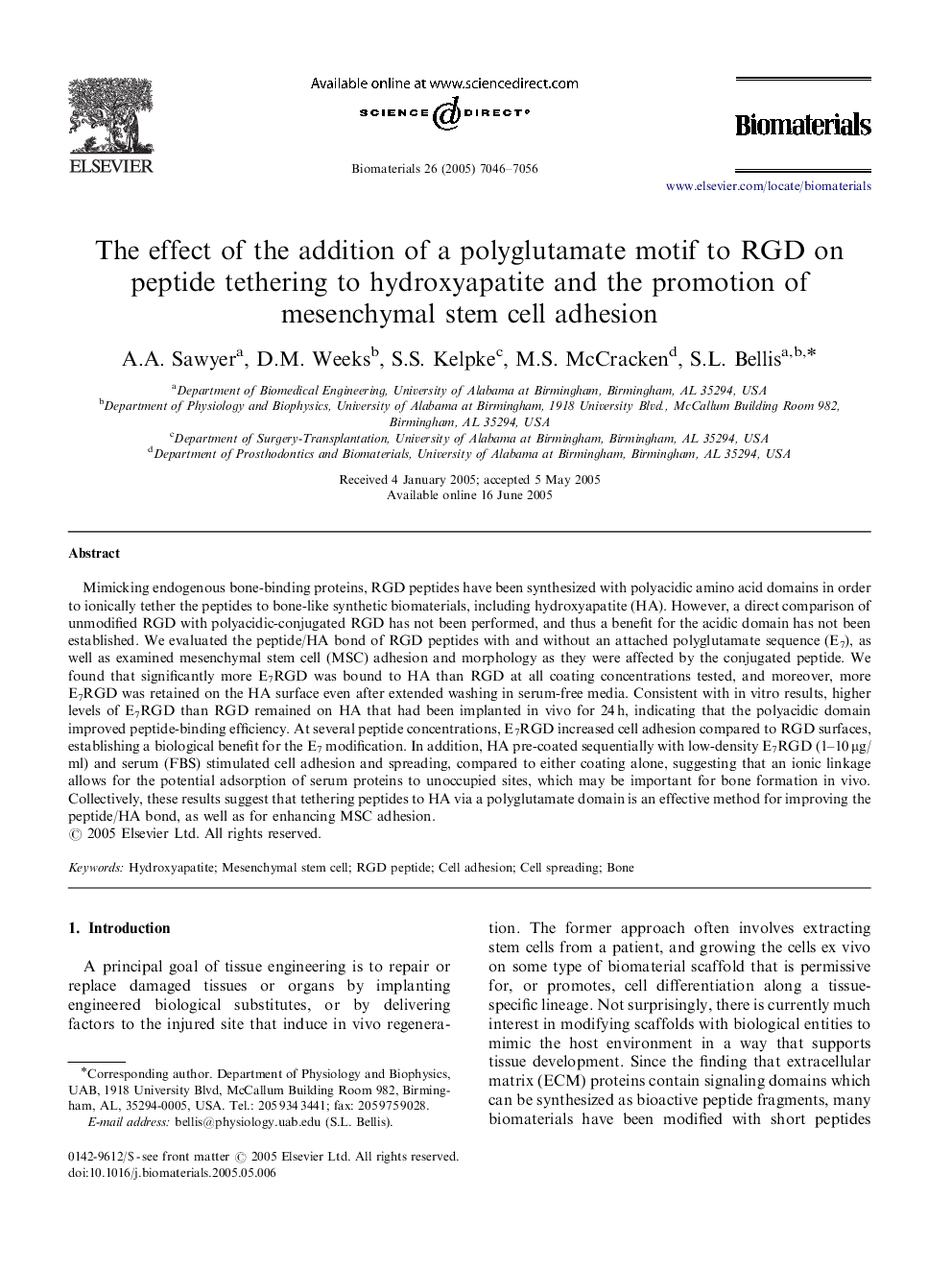| Article ID | Journal | Published Year | Pages | File Type |
|---|---|---|---|---|
| 12462 | Biomaterials | 2005 | 11 Pages |
Mimicking endogenous bone-binding proteins, RGD peptides have been synthesized with polyacidic amino acid domains in order to ionically tether the peptides to bone-like synthetic biomaterials, including hydroxyapatite (HA). However, a direct comparison of unmodified RGD with polyacidic-conjugated RGD has not been performed, and thus a benefit for the acidic domain has not been established. We evaluated the peptide/HA bond of RGD peptides with and without an attached polyglutamate sequence (E7), as well as examined mesenchymal stem cell (MSC) adhesion and morphology as they were affected by the conjugated peptide. We found that significantly more E7RGD was bound to HA than RGD at all coating concentrations tested, and moreover, more E7RGD was retained on the HA surface even after extended washing in serum-free media. Consistent with in vitro results, higher levels of E7RGD than RGD remained on HA that had been implanted in vivo for 24 h, indicating that the polyacidic domain improved peptide-binding efficiency. At several peptide concentrations, E7RGD increased cell adhesion compared to RGD surfaces, establishing a biological benefit for the E7 modification. In addition, HA pre-coated sequentially with low-density E7RGD (1–10 μg/ml) and serum (FBS) stimulated cell adhesion and spreading, compared to either coating alone, suggesting that an ionic linkage allows for the potential adsorption of serum proteins to unoccupied sites, which may be important for bone formation in vivo. Collectively, these results suggest that tethering peptides to HA via a polyglutamate domain is an effective method for improving the peptide/HA bond, as well as for enhancing MSC adhesion.
